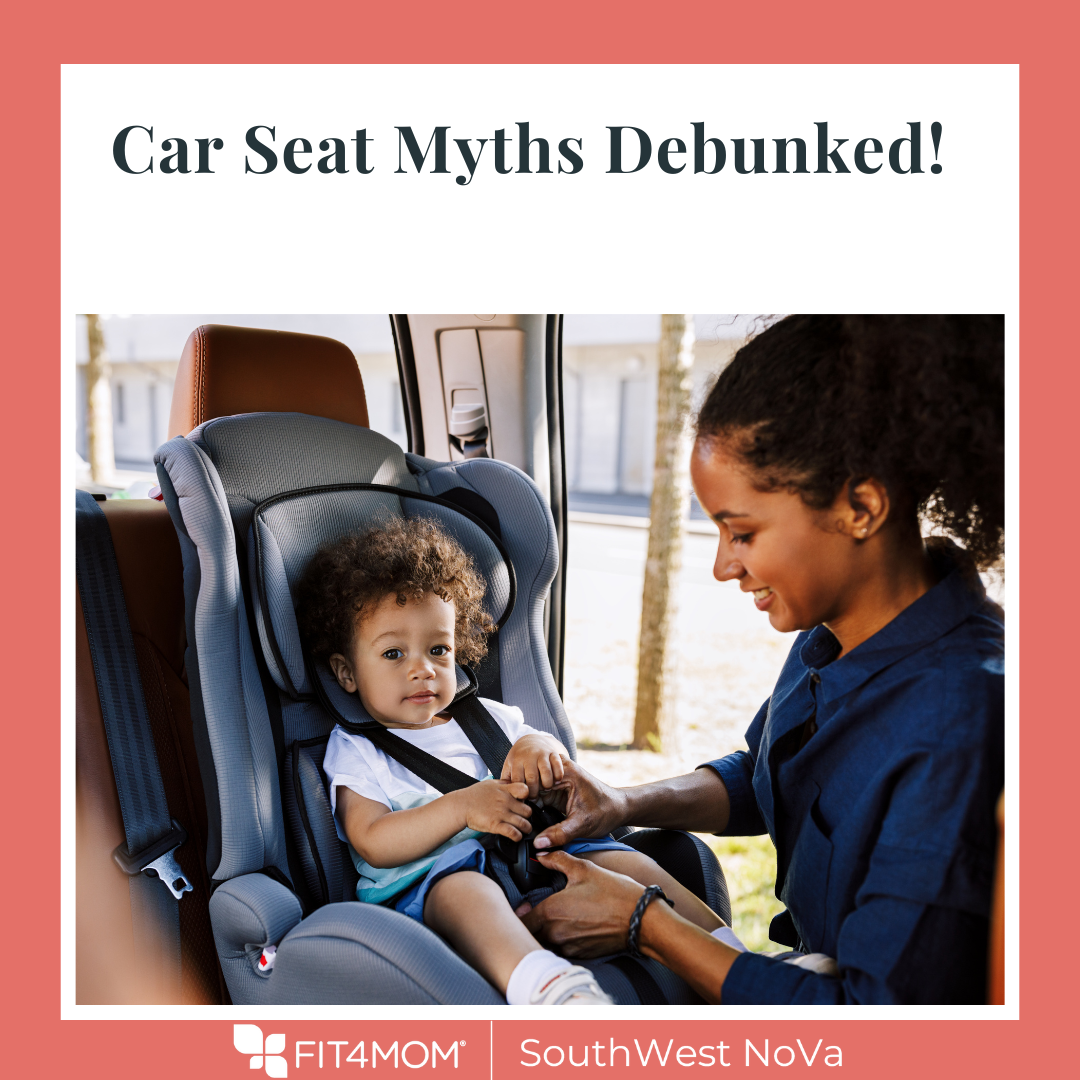Car seats continue to be the land of myth and mystery, largely due to old wives’ tales that have been handed down over the years. Below I’ll cover a couple of the most popular car seat myths that I have heard during my time as a mom and Child Passenger Safety Technician (CPST) but remember that your car seat’s manual is the source of truth for your seat!
Myth #1 – Once a child’s feet touch the vehicle seat while rear-facing, it’s time to turn them around.
This is a very common concern amongst parents who are worried about leg injuries. However, kids are more prone to leg injuries when forward facing and having their legs collide with the vehicle seat in front of them vs. having their legs bend in toward their bodies. This is part of the reason why rear-facing is safer and CPSTs along with the American Academy of Pediatrics want kiddos rear facing to the maximum limits of their seats vs. just age 2 (as required by law in the State of Virginia).
Myth #2 – One installation method is good, two is great, three is best!
One of the biggest issues first time parents have is figuring out how to install their car seat. Most assume that installing with both the lower anchors and the seat belt make for a safer installation. Some have even figured out how to attach the tether to a portion of their vehicle when their child is in a rear-facing convertible seat. However, the bulk of the car seats on the market will require you use one installation method – the lower anchors or the seatbelt (and always use the tether when forward facing!). This is also a great time to shout out both your car seat and vehicle manuals – read both when installing your seat as many vehicles don’t have lower anchors for the center seating position and will require a seatbelt install for that location.
Myth #3 – Fitting three car seats across is impossible unless X brand is used!
There have been multiple brands of car seat over the years that are THE one to have. Car seat technology is moving (in my opinion) faster than cell phones these days, and we’re seeing tons of new features entering the market. Part of this is a dramatic increase in the availability of narrow car seats.
Consequently, parents have a lot more options these days for finding narrow seats that will accommodate three children across, even in smaller vehicles. However, there is no silver bullet here – the car seats that will work for your situation are going to depend on your vehicle, your children’s statistics, your lifestyle (e.g., do you have to drop off and pick up kids at school, do you parallel park, etc.), and your budget. Consult a CPST!
Myth #4 – Once a child turns 8, they can move to the front seat!
This one is going to ring true to anyone dealing with an elementary school drop-off or pick-up line.
While Virginia’s laws state that children who are 8 can ride without a booster seat, there are a lot of caregivers who take that to mean that their child can start riding in the front seat as well. Firstly, the back seat is the right seat until the child is 13. Most sun visors on the passenger seat will state this same information. Age 13 is the guideline we typically use based on bone maturity. Air bags explode out at the rate of 200 mph and can do a lot of harm to bones that are still developing. Secondly, most kids need a booster seat until age 10-12 these days. The 5-step test is your guide to know if your child is ready to ride without a booster.
Myth #5 – Anyone at a Fire Station will check your car seat!
Sadly, the Prince William County Department of Fire and Rescue terminated their car seat program in 2020, so odds are your local fire department does not have a certified CPST on staff. If you want to verify, please make sure you call ahead. You can also ask to see any CPST’s wallet card. This is proof that we are certified and the timeframe for which we are certified. CPSTs have to re-certify every two years, so making sure the person you’re speaking with is currently certified is key.
This was a small collection of car seat myths. Again, please make sure to consult the manuals for your car seat and your vehicle as your source of truth. Finding a certified CPST for a one-on-one appointment is also a huge asset – most conduct checks for free.
If you’d like to find Saving Northern Virginia’s Littles in the near future, please find us on social media, or head to our website – savingnovaslittles.com – for our list of upcoming events. You can also reach out to me directly via savingnovaslittles@gmail.com.

